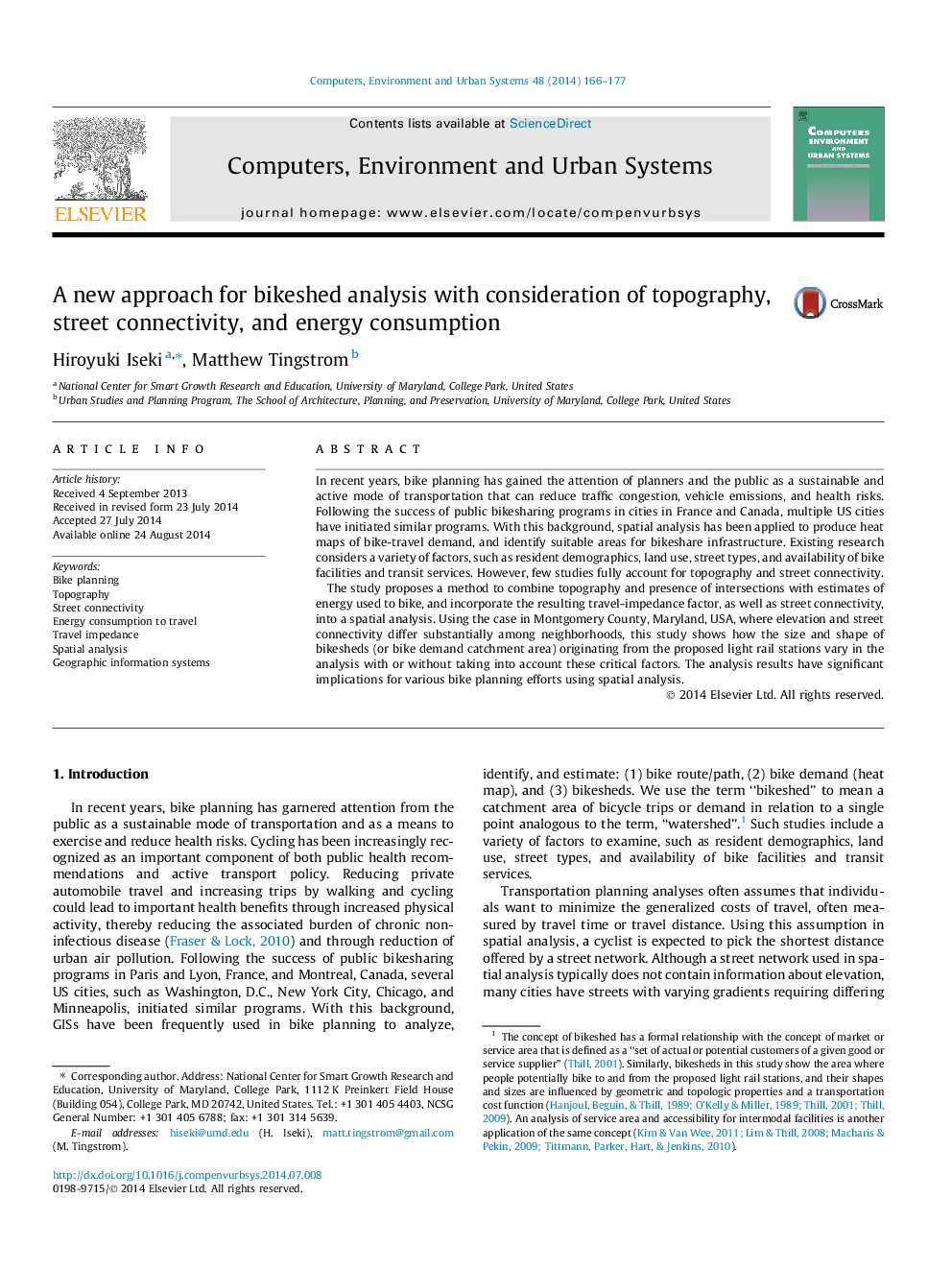| کد مقاله | کد نشریه | سال انتشار | مقاله انگلیسی | نسخه تمام متن |
|---|---|---|---|---|
| 506350 | 864896 | 2014 | 12 صفحه PDF | دانلود رایگان |
• Clearly explained how topography can affect the size and shape of bikeshed.
• Developed the methodology to use energy consumption as travel impedance.
• Applied the methodology to real conditions in Montgomery County, Maryland.
• Presented the differences in bikesheds’ size and shape in maps and graphs.
• Existing methods substantially overestimate bicycle level cycle catchment area and demand level.
In recent years, bike planning has gained the attention of planners and the public as a sustainable and active mode of transportation that can reduce traffic congestion, vehicle emissions, and health risks. Following the success of public bikesharing programs in cities in France and Canada, multiple US cities have initiated similar programs. With this background, spatial analysis has been applied to produce heat maps of bike-travel demand, and identify suitable areas for bikeshare infrastructure. Existing research considers a variety of factors, such as resident demographics, land use, street types, and availability of bike facilities and transit services. However, few studies fully account for topography and street connectivity.The study proposes a method to combine topography and presence of intersections with estimates of energy used to bike, and incorporate the resulting travel-impedance factor, as well as street connectivity, into a spatial analysis. Using the case in Montgomery County, Maryland, USA, where elevation and street connectivity differ substantially among neighborhoods, this study shows how the size and shape of bikesheds (or bike demand catchment area) originating from the proposed light rail stations vary in the analysis with or without taking into account these critical factors. The analysis results have significant implications for various bike planning efforts using spatial analysis.
Journal: Computers, Environment and Urban Systems - Volume 48, November 2014, Pages 166–177
